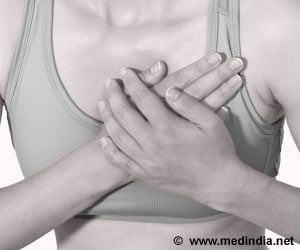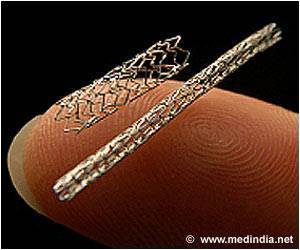Men and women go through similar stages of pain when heart symptoms strike, but women are more likely to delay seeking care and can put their health at risk.

Dr. Kreatsoulas, an epidemiologist, says we don't know enough about how people perceive their heart symptoms and at what stage they are prompted to seek medical care. Her study included patients with suspected coronary artery disease, just prior to undergoing their first coronary angiogram test.
The study was conducted in two parts. In the first part, researchers interviewed cardiac patients about their experience of angina and their decision to seek medical care. A new group of patients was enrolled into the second phase of the study, which quantified by gender the reasons why patients sought care.
Angina is the pain that occurs when your heart doesn't get as much blood and oxygen as it needs because of a blockage of one or more of the heart's arteries. This pain is often described as a pressure, tightness or burning feeling. It is a warning signal that you are at increased risk of a heart attack, cardiac arrest or sudden cardiac death.
The researchers developed the term "symptomatic tipping point" to capture the transitional period someone goes through between experiencing cardiac symptoms and getting medical attention. They identified six transitional stages, common to both men and women. Men, she notes, responded to these symptoms faster.
The six stages, in chronological order, include:
• Denial or dismissal of symptom
• Seeking assistance/second opinion of someone such as a friend or family member
• Recognition of severity of symptoms with feelings of defeat
• Seeking medical attention, then
• Acceptance.
Women stayed in the denial period longer than men. While men would consult with a friend or loved one more readily about the symptoms, "women would wait for others to tell them they looked horrible," says Dr. Kreatsoulas. "Women displayed more of an optimistic bias, feeling that the symptoms would pass and get better on their own."
Other priorities could be taking over, she suggests, such as women's focus on caregiving roles or even risk aversion. Dr. Kreatsoulas points to research showing that when women are ill, "they are often more concerned with how long they may be out of commission and not necessarily as concerned about the best treatment options."
She says that both men and women often attribute symptoms to other possibilities, such as heartburn or a pulled muscle. "But when women feel even a small improvement in symptoms, they seem to dismiss them for a longer period of time," says Dr. Kreatsoulas.
That may be due partly to a perception that coronary artery disease is a "man's disease," even though it's a leading cause of mortality for women. If women aren't thinking about heart attack, then it's easier to disregard the symptoms.
"Angina is a warning signal that you are at increased risk of a heart attack, cardiac arrest or sudden cardiac death," says Heart and Stroke Foundation spokesperson Dr. Beth Abramson author of Heart Health for Canadians. "If you experience this kind of chest pain, see your doctor immediately to determine the cause and get treatment if necessary."
As for those angina symptoms, Dr. Abramson says there's another misconception – that women and men experience different signs of heart problems. "That's largely a myth and ignoring symptoms could put your life at risk," she says. "Heart disease is a leading cause of death and can strike anyone. Making healthy choices is an important part of prevention, but understanding the symptoms and acting on them without delay can also save lives."
Angina usually lasts a few minutes, but if the pain lasts longer, it may mean that you have a sudden, total blockage of a coronary artery or that you may be having a heart attack and you need to get medical help immediately. "In this case, don't delay. Call 9-1-1 or your local emergency response number immediately," Dr. Abramson says.
She recommends that men and women alike do a free risk assessment at heartandstroke.ca/riskassessment and get tips on lowering their risk. "Being smoke-free, physically active, following a healthy diet and controlling blood pressure and blood cholesterol levels are key in preventing premature heart disease."
Research creates survivorsGrace Dierssen's heart attack was the turning point — the catalyst for a complete lifestyle overhaul. Her high-powered job in software development and e-commerce didn't leave much room for cultivating personal health. She ignored the discomfort, exhaustion and breathing difficulties, wondering if her symptoms were all in her mind, as she headed off to work.
Hours later, she couldn't stand the pain and went to a walk-in clinic, which immediately called an ambulance. "As women, we tend to put everyone else's needs ahead of ours," says Grace, acknowledging that many women juggle career, raising children and possibly care for their own parents as well. "I was conscious of that in my own recovery. I've learned to stick up for myself, and put my health first."
Three years after her heart attack, Grace has made a full recovery, and encourages other women to give their health the full attention it deserves before it's too late.
The Canadian Cardiovascular Congress is co-hosted by the Heart and Stroke Foundation and the Canadian Cardiovascular Society.
Source-Eurekalert
 MEDINDIA
MEDINDIA




 Email
Email








